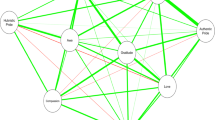Abstract
Emotions are simple—we are proud when we do something good, angry when others stand in our way—and yet, as humans we are infinitely complex in our ability to complicate them. While we all seem to have different approaches to emotion, there are, what we might call, common emotional types. We receive common messages about emotion from the media and our culture, so it makes sense that, in addition to normal emotional responses, we have similar approaches to emotionality itself. Psychologists might consider a list of emotion and mood disorders to be a list of emotional types, and, however true that may be, here we are looking for more general and common themes. For example, some people are very emotional and some people are unemotional. We shall see that each profile involves not only typical behaviors but also a set of beliefs about emotions and their value.
Access this chapter
Tax calculation will be finalised at checkout
Purchases are for personal use only
Preview
Unable to display preview. Download preview PDF.
Similar content being viewed by others
Notes
Seneca’s Epistles, cxiii, Sec. 28. Also, “There is nothing grand that is not also calm” (Seneca’s Dialogues, Book iii, Chap. Xxi, Sec. 4); See Frederic Holland, The Reign of the Stoics (New York: C. P. Somerby, 1879).
Nancy Sherman, Stoic Warriors (New York: Oxford University Press, 2005).
Epictetus, Handbook of Epictetus, trans. Nicholas P. White (Indianapolis: Hackett, 1983), III.
See Andrew M. Holowchak, The Stoics: A Guide for the Perplexed (New York: Continuum, 2008). Sandbach argues that the Stoics did not uniformly reject emotion because they do hold that there are good emotions (eupatheiai). Instead, privileging the theories of Greek over Roman
Stoics, he argues that they only criticized “passions,” which are by definition irrational. See F. H. Sandbach, The Stoics (Indianapolis: Hackett, 1994). In any case, it is undeniable that the Stoics held that virtue is entirely within one’s control and, therefore, there is no such thing as physical goods. If emotions speak for physical and external psychological needs, then the Stoic will necessarily classify them as irrational. Nevertheless, my goal here is not to unassailably interpret Stoic philosophy but to illustrate a common emotional comportment, which we can call “Stoic” easily enough.
See Daniel Goleman, Emotional Intelligence: Why It Can Matter More Than IQ (New York: Bantam Books, 1995).
Psychologists often call violence caused by suppressed anger “eruptive violence.” Of course, without a good understanding of conflict resolution, anger can also lead directly to violence. Nevertheless, there is no necessary connection between anger and violence. Robert F. Marcus, “Emotion and Violence in Adolescence,” in Encyclopedia of Violence, Peace and Conflict, ed. Lester R. Kurtz (Waltham, MA: Academic Press, 2008).
For a good review of the literature, see Christine Purdon, “Thought Suppression and Psychopathology,” Behavior Research and Therapy, 37 (11) (November 1999): 1029–1054.
For a good account of Kant’s dismissal of the Stoic understanding of happiness, see Frederick Beiser, “Moral Faith and the Highest Good,” in The Cambridge Companion to Kant and Modern Philosophy, ed. Paul Guyer (New York: Cambridge University Press, 2006).
David Schnarch, Passionate Marriage (New York: W. W. Norton, 2009).
Jürgen Habermas, The Philosophical Discourse on Modernity (Cambridge: MIT Press, 2000).
L. Aknin, M. Norton, and E. Dunn, “From Wealth to Well-Being? Money Matters, But Less Than People Think,” Journal of Positive Psychology, 4 (6) (2009): 523–527.
She reviews the scientific evidence against the popular misconception that “positive thinking” can prevent and treat diseases, like cancer. Barbara Ehrenreich, Bright-Sided (New York: Metropolitan Books, 2009). I am grateful to Kelly Sorensen for this reference. In fact, the core assumption that the mind can control the body, willing a stronger immune system, for example, is reminiscent of Christianity and Stoicism, whereas research into the physical causes of diseases has routinely been successful.
Copyright information
© 2015 Diane Williamson
About this chapter
Cite this chapter
Williamson, D. (2015). Profiles of Emotionality. In: Kant’s Theory of Emotion. Palgrave Macmillan, New York. https://doi.org/10.1057/9781137498106_2
Download citation
DOI: https://doi.org/10.1057/9781137498106_2
Publisher Name: Palgrave Macmillan, New York
Print ISBN: 978-1-349-50536-4
Online ISBN: 978-1-137-49810-6
eBook Packages: Palgrave Religion & Philosophy CollectionPhilosophy and Religion (R0)




